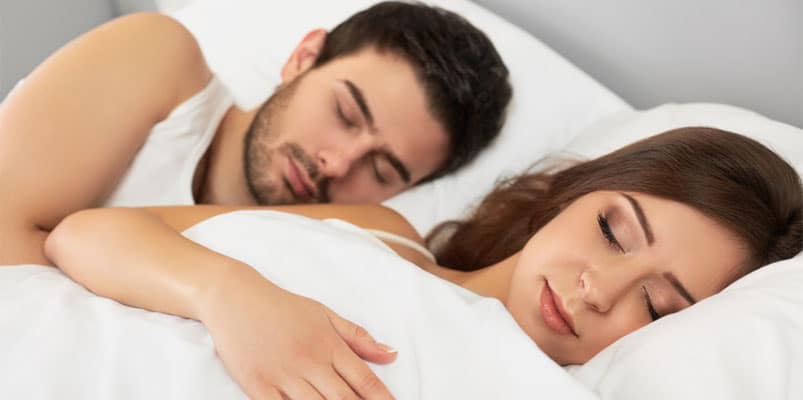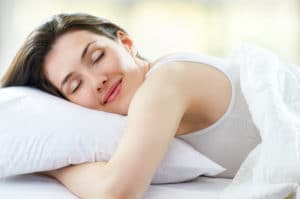Snoring & Sleep Apnea Treatment in Austin, TX

What Are My Snoring and Sleep Apnea Treatment Options?
At Sinus & Snoring Specialists, Dr. Daniel Slaughter and Dr. Ryan Salvador provide comprehensive solutions for snoring and sleep apnea. Our approach is never one-size-fits-all—we carefully tailor each treatment plan to your unique anatomy and preferences.
We offer the full spectrum of care, including nonsurgical therapies, medical management, minimally invasive procedures, and advanced surgical options. With over 40 years of combined expertise and a state-of-the-art facility, Dr. Slaughter and Dr. Salvador are dedicated to delivering real, lasting solutions.
Unlike traditional sleep centers, you don’t need to spend the night in a lab. Our office provides advanced home sleep testing (HST) devices, so you can evaluate your sleep comfortably in your own bed. And unlike many clinics, you won’t be forced into CPAP therapy—we provide all the latest, in-office procedures designed to correct the underlying anatomical causes of snoring and sleep apnea.
Snoring Vs. Sleep Apnea
Dr. Daniel Slaughter talks about the difference between snoring and sleep apnea and how we diagnose it and how we treat it.
At Sinus & Snoring Specialists, we offer a wide range of treatment options for snoring and sleep apnea. It’s important to understand that these conditions are all part of the same disease spectrum, which progresses in severity:
- Snoring
- Upper airway resistance syndrome
- Sleep apnea
Snoring is the mildest form. It occurs when airflow is partially obstructed during sleep, creating noise. While it may disturb a bed partner, snoring by itself usually doesn’t impact the sleeper’s health or sleep quality.
Upper airway resistance syndrome (UARS) is more significant. In addition to snoring, the increased resistance disrupts sleep, causing frequent arousals and reducing restorative rest. This can leave patients feeling fatigued despite a full night of sleep.
Sleep apnea is the most serious form. Here, airflow resistance is so severe that breathing is reduced—or completely stops—during sleep. These pauses lower blood oxygen levels and place strain on the cardiovascular system. Left untreated, sleep apnea is linked to a wide range of health problems, including:
- Hypertension
- Weight gain
- Diabetes
- Atrial fibrillation
- Heart attack
- Stroke
- Dementia
In addition to long-term health risks, sleep apnea can cause excessive daytime sleepiness, reduced focus, productivity, and overall quality of life.
Why Do I Snore?
Why is sleep so important?
Sleep is critical to our daily function and our overall health. It causes mental and physical repair that allows you to wake up rested and ready for the day. Although snoring is often thought of as a nuisance, it is actually directly related to many serious health conditions. Especially when snoring results in pauses in breathing during sleep, called apnea. These are often heard by the bed partner as a break in snoring, followed by a loud gasp and a snore.
Causes Of disruptive sleep
Sleep Hygiene plays an important role in reducing snoring and sleep apnea.

-
Sleep Hygiene plays an important role in reducing snoring and sleep apnea.
- Sleep Position is very important for many patients. Sleeping on your back will frequently increase snoring and apnea. We can offer advice about how to enhance side or prone sleeping. Certain pillow and mattress types can also be quite helpful to reduce snoring.
- Sedative Medications and Alcohol increase snoring and apnea and should be avoided before bedtime.
- Weight Gain tends to increase snoring and apnea. A diet and exercise program can be very helpful and we also work cooperatively with endocrinologists to analyze your metabolism to assist in weight loss.
- Allergy Control from our Allergy Center can reduce congestion and reduce snoring and apnea as well.
Read Blog Post: UNDERSTANDING WHAT YOUR SLEEP APP IS TELLING YOU
Snoring, Upper Airway Resistance Syndrome (UARS) & Sleep Apnea Treatment Options
Sinus & Snoring Specialists offers many different solutions to treat snoring and sleep apnea. We offer nonsurgical treatments, minimally invasive procedures, and surgical options. The point is that it is not a one-size-fits-all treatment plan, and it is tailored to each patient’s anatomical issues and desires. Our state-of-the-art facility, combined with many years of expertise and experience, allows Dr. Slaughter and Dr. Salvador to provide a real solution to your snoring or sleep apnea issue. Best of all, you DO NOT have to go to a sleep lab to have a sleep study.
We have sophisticated HST( Home Sleep Testing ) devices available in our office to allow you to accurately evaluate your sleep in the comfort of your own bed. And you will not be forced into a CPAP, as we offer all of the modern techniques, all available in our office procedure suite, to correct the anatomical issues causing your snoring or sleep apnea.
Non-Surgical Sleep Apnea Treatment Options
- CPAP (Continuous Positive Airway Pressure) and BiPAP (Bilevel Positive Airway Pressure): This form of therapy applies pressure through a mask at night to keep the airway open. It can be very successful, but it is poorly tolerated by many. Frequently, people with nasal, sinus, and allergy issues will not be able to tolerate it because the pressure required to pump air through a closed nose is too high. Our modern balloon sinuplasty procedure, combined with the correction of any deviation of the septum and swollen turbinates, can make the CPAP tolerable and more effective.
- OA (Oral Appliance) Therapy: We work closely with specialized sleep dentists and orthodontists so they can make custom-fitted oral appliances for our patients who have large tongues. This helps hold the jaw and tongue forward at night and prevents snoring and obstructive sleep apnea caused by the tongue.
Minimally Invasive Sleep Apnea Treatment Options
At Sinus & Snoring Specialists, we provide a variety of minimally invasive procedures to address the underlying causes of snoring and sleep apnea:
- Balloon Sinuplasty
- Endoscopic Septoplasty
- Turbinate reduction
- Nasal Polyp Removal
- Soft Palate Tightening (UPPP)
These treatments work by correcting obstructions in the nasal airway and throat, improving airflow, and reducing snoring.
When airflow is forced through a narrow passage, it becomes faster and more turbulent—similar to how water sprays harder and faster when you place your thumb over the end of a garden hose. This principle, known as the Bernoulli effect, explains how nasal blockage can lead to snoring and sleep apnea:
-
- Turbulent airflow moves from the nose into the throat, vibrating the soft palate and uvula, which creates the snoring sound.
- Negative pressure in the throat can pull the tongue backward, blocking the airway.
- Nasal obstruction often forces an open-mouth posture, allowing the jaw to fall back and further contribute to airway collapse.
Balloon sinuplasty, septoplasty, turbinate reduction, and nasal polyp removal not only improve daytime breathing but also significantly decrease turbulent airflow—reducing both snoring and apnea.
The UPPP further assists by making the soft palate higher and stiffer, further opening the airway and reducing snoring and apnea. This is rarely needed and is best suited for a patient who has an abnormally elongated uvula.
Most of these procedures can be combined into a single office visit. They typically take about 15 minutes under IV sedation, with minimal recovery time—most patients are back to work the very next day.
Surgical Sleep Apnea Treatments
- Tonsillectomy: Large tonsils can contribute to OSA, and in some cases, tonsillectomy is still important to obtain a cure. This is done as a last option as there is significant downtime. It is a simple outpatient procedure.
- Maxillary Mandibular Advancement Surgeries: We work closely with Maxillofacial surgeons in cases where the development of the facial skeleton is contributing to sleep apnea. In these cases, advancement of the upper and lower facial skeleton can be of great assistance.
- Inspire Sleep Therapy: Inspire implant is a surgical procedure for the treatment of obstructive sleep apnea (OSA). Simply put, it is a small device that is that works inside your body while you sleep to treat the root cause of sleep apnea using a remote control. This device is placed during a same-day, outpatient procedure.
Can Sleep Apnea Cause Anxiety?
OSA has been shown to increase both anxiety and depression.
What Kind Of Doctor Treats Sleep Apnea?
Physicians board-certified by the AASM (American Academy of Sleep Medicine) are the experts in sleep apnea. These physicians come from many specialties. Those who are board-certified in ENT as well as sleep medicine have a unique understanding of the anatomy related to sleep apnea and can offer a broad array of treatments beyond just CPAP.
How Is Neck Circumference Related To Sleep Apnea?
People with a neck circumference of 17 inches or greater are at a significantly higher risk for obstructive sleep apnea (OSA). Other physical factors that increase the likelihood of OSA include:
- Anatomical narrowing of the nasal airway
- A large tongue
- Enlarged tonsils
- Excess weight or obesity
These features can all contribute to airway blockage during sleep, making OSA more likely and more severe.
What Is The Best Pillow For Sleep Apnea?
Pillow systems that elevate the head higher than the stomach and assist the patient in sleeping on their side (such as the Medcline system) help treat OSA.
Are Sleep Apnea Tests Covered By Insurance?
Typically, home sleep studies are covered by insurance. In-lab studies, are frequently not covered by insurances.
Are There Negative Side Effects From Using A CPAP?
People have a lot of sleep disruption from CPAP because of the cumbersome nature of the therapy. Facial creases and skin irritation also occur. Sinus infections, nasal bleeding, and worsening allergies also occur.
Schedule a consultation for Snoring or Sleep Apnea Treatment in Austin
If you are experiencing problems related to snoring and sleep apnea, contact our Austin office at 512.601.0303 to schedule a consultation today.

